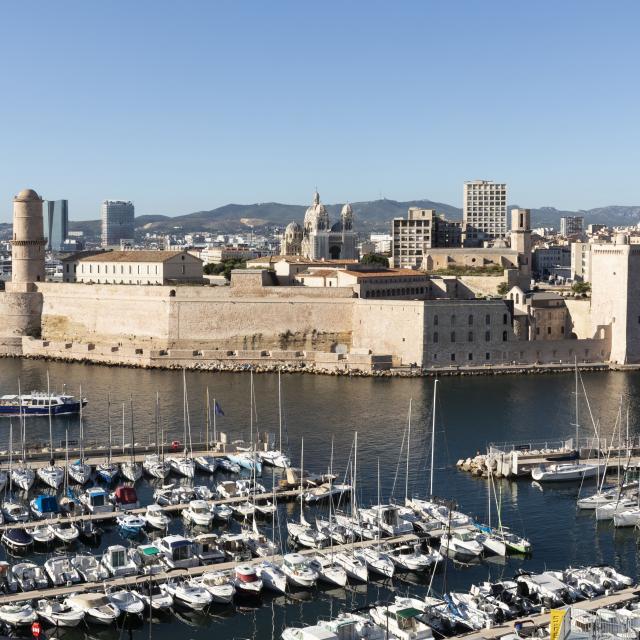History of the military fort
Construction
Built on the orders of Louis XIV between 1660 and 1664 by the Chevalier de Clerville, Fort Saint-Nicolas was intended both to surveillance the city, and the people of Marseille who were hostile to it, but also to protect it against attacks from the sea. The king was keen to have a citadel built in the “cleanest” part of the city. For its construction, stones from the old Porte Royale were used, as well as those from Cap Couronne.
Demolition and redevelopment
During the French Revolution, the people of Marseille, concerned about the threat the fort could represent, set about destroying it. The National Assembly ordered a halt to the destruction in order to preserve this defensive work. Restoration work began, with the grayish stone contrasting with the pinkish stone used in the past. In 1860, during the construction of the Imperial Residence (Palais du Pharo), Fort Saint-Nicolas was cut in two to allow automobile traffic on Boulevard Charles Livon, linking the Vieux Port and the Pharo district. Today still cut in two parts, the fort consists of a seaside portion: Ganteaume fort, and a landside portion: Entrecasteaux fort.
Functions
In 1823, following the Duc d’Angoulême’s expedition to Spain, many prisoners were confined at the fort. A few years later, in 1832, it was also used as a place of detention for sailors on the Duchess de Berry’s ship. Saint Nicolas Fort remained a prison until the end of the Second World War. From now on, Ganteaume Fort (on the seaward side of Saint Nicolas Fort ) housed the military circle and officers’ mess. Entrecasteaux Fort – la Citadelle de Marseille – (on the landward side of Saint Nicolas-Fort ), meanwhile, has a section open to the public for visits.











